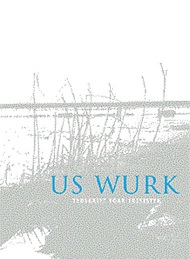Flaainammen yn it Frysk
Samenvatting
This article deals with hypocoristics (pet names) in Frisian. In the linguistic literature on Frisian, hypocoristics have been noted because of their remarkable shape vis-à-vis the full form of the names they are associated with. Until now, however, an in-depth analysis of hypocoristic formation had not been undertaken. The present article aims to fill this lacuna. In order to do so, a database has been set up, consisting of some four hundred pairs of full names and their hypocoristic counterparts. Hypocoristic formation is viewed as an instance of the morphological process of conversion or zero-derivation. The outcome, however, is determined to a large extent by the prosodic and phonological preferences of Frisian.
Hypocoristic formation has a quantitative and a qualitative side. The former aspect is accounted for by a quantitative instruction, to the effect that the full form of the name is projected onto a trochee, which is the unmarked foot type in Frisian. This first step is followed by the implementation of a qualitative instruction, the aim of which is to provide a hypocoristic with an unmarked phonological structure. Furthermore, there is the overarching principle that a minimal formal relationship should remain between the full name and the hypocoristic form. The quantitative instruction is a categorical requirement, implying that all hypocoristics are mono- or disyllabic. The qualitative instruction, on the other hand, is the expression of phonological preferences and tendencies. In the unmarked case, hypocoristics consist of open syllables, with single onsets; they do not contain diphthongs or long vowels, etcetera. This results in, for instance, a disproportionally high number of hypocoristics with an onset consisting of a plosive. Nevertheless, all of these preferences and tendencies may have exceptions. First quantitative templates of the ideal mono- and disyllabic hypocoristics are set up, then an exploration follows of how the hypocoristics in the corpus relate to these templates. There appears to be a fairly great match.
This study also includes an examination of how the consonantism of the onset of the hypocoristics and their vocalism relate to those of the full forms from which they derive. As expected, the hypocoristics appear to have a strong preference for the less marked or the unmarked phonological structures, which are attained through such processes as cluster simplification, consonant strengthening, monophthongisation (of diphthongs), and denasalisation (of nasalised vowels). Special attention is paid to disyllabic hypocoristics which display ‘consonant harmony’, i.e. their syllable onsets have identical consonants or consonants with the same place of articulation. The phenomenon is related to child language, because it is quite pervasive in language acquisition, at least in the early stages of this process.

